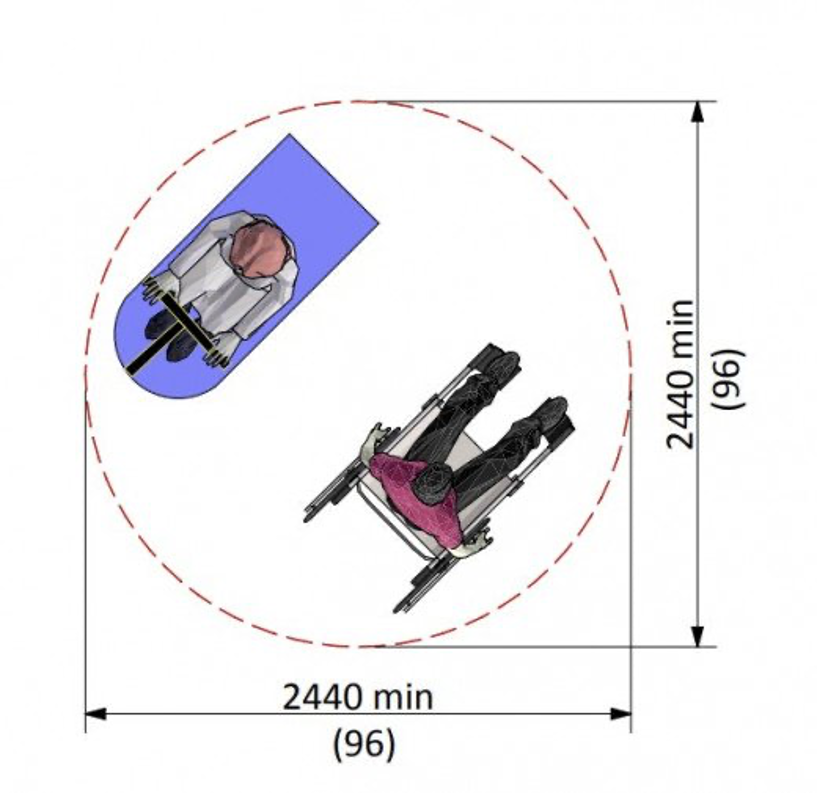Barrier Free Washrooms and Ontario Accessibility Laws Coming in 2025
What Is a Barrier Free Washroom?
As the name implies, a barrier free washroom is a commercial rest room that does not have any physical barriers that restrict people from easily using is it. Anyone, including people using wheelchairs and handicapped people, can get in and out of it without a struggle, and can use the bathroom equipment any impediments.
Barrier free washrooms can be installed in homes and in commercial settings. For commercial environments, there are specific guidelines which are usually published by local municipalities that set out the rules and regulations for designing and installing barrier free washrooms.
A barrier free washroom is sometimes referred to as a universal washroom, but a universal washroom is accessible by individuals and/or their caregiver only. A washroom can be accessed and used by anyone at any time.
All the bathroom equipment in a universal washroom including the powered doors, bathroom stalls, the sink, toilet, the waste receptacles, and the soap dispensers are easily usable and accessible by anyone.
Certain facilities and work environments must ensure they’ve built regular barrier free washrooms, and one or more universal washrooms on their premises.
Contractors and builders must make themselves familiar with these regulations and guidelines and ensure that the projects they build strictly follow them.
There Are Strict Specifications to Follow
There are strict specifications that guide the dimensions, height, widths, angles, and positioning of the equipment and walls so as to ensure that handicapped people and people in wheelchairs are not blocked from easily using them.
You can see this list of common OBC compliant washroom equipment in the related resources section below, for examples of the type of accessories that are required in a barrier free washroom.
These strict specifications also apply to change rooms. Handicapped people, and people using wheelchairs are to have unhindered access to change rooms, and the equipment within them.
These standards fall under the Accessibility for Ontarians with Disabilities Act (AODA) which aims to make public washrooms in Ontario completely accessible and restriction free to everyone by the year 2025.
You must abide by the AODA standards by 2025 if you provide goods and services, if you own a building or premise that is used by others, and if you are an employer in Ontario.
Making Yourself familiar with the OBC Act
The following link is the official Building Code Act which you can peruse to make yourself familiar with it. The Act is quite detailed and complex, but most builders and renovations companies have been building their projects around these standards for years since the Act was first drafted in 1992. The Ontario Building Code Act address both barrier free and universal washroom standards.
The term “universal washroom” is found in the Ontario Building Code Act 18 times. This suggests that businesses, corporations and other places of employment should expect to have a universal washroom build integrated into their renovation projects.
There are sections in the OBC Act addressing standards for each section of a washroom, they include specifications for:
- Water closets and enclosures
- Urinals
- Lavatories (sinks)
- Mirrors
- Washroom Accessories
- Doors
- Hand dryers
- Paper towel dispensers
- Showers
- Changing rooms
- Adaptable seating
- Grab bars
- Faucets
- Barrier free paths
- Entrances/exits
The objective of the OBC Act is to ensure washrooms are completely accessible and any person’s right to use the washroom is guaranteed. The aim to ensure individual privacy and dignity for all people with or without a disability, and those requiring the help of an assistant
Related Resources
For more information you can read the following resources which will provide you with updated information about the OBC Act and provide you with a clearer overview of what needs to be done to integrate barrier free and universal washrooms into your projects.

